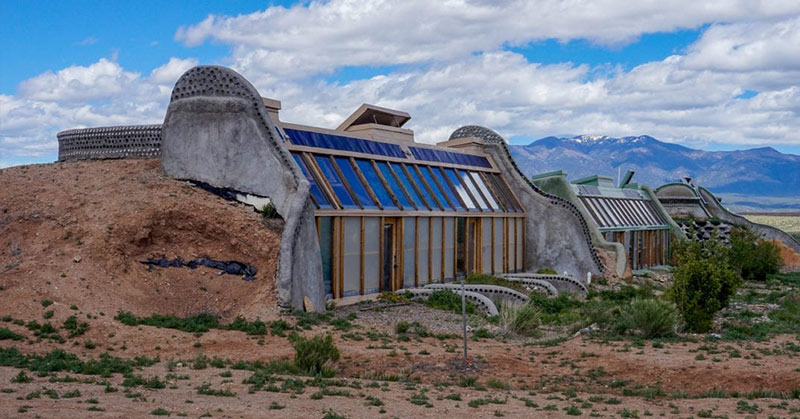In 1970, architect Michael Reynolds came up with a concept for how to build houses that were completely self-sustaining, allowing residents to live off-the-grid. This idea led to the creation of “Earthships”. Today, there are 79 of these peculiar-looking houses sitting just outside of Taos, New Mexico, in a community known as the “Greater World Earthship Community”, providing full-time housing for at least 130 people. It also has an academy in partnership with Western Colorado University, an internship program, and a visitor center [1].
Earthship Biotecture
Adam Baisley, one of the staff members working at the visitor center, says the idea behind the Earthship concept is to design homes that take care of us, instead of the other way around. “The basic premise of the Earthship concept is that we’re looking to sustainably harvest naturally occurring phenomena so that our home will take care of us, versus us going out into the world, juggling jobs we may or may not like, just to come back and take care of a home,” he said [1]. The staff and residents of the Greater World Earthship Community believe that if they can get their utilities for free, they should not have to pay somebody else for them.
Harvesting Natural Resources
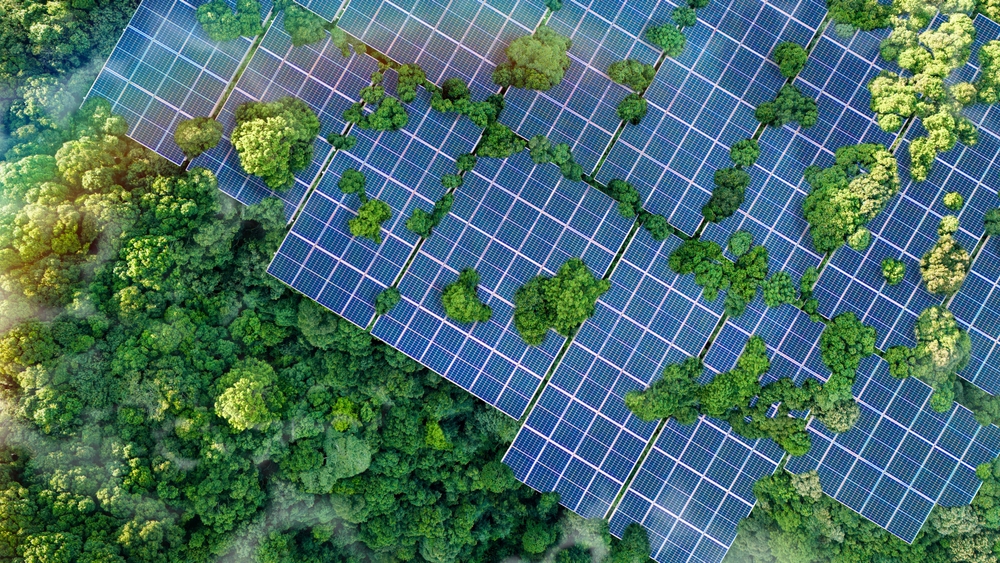
From start to finish, the Earthships are designed to use natural resources to provide electricity, plumbing, heating, and cooling. The south-facing walls for each home are made of angled, floor-to-ceiling windows and are covered in greenery in the form of plants and vegetables that grow from the ground and in pots. The windows are designed to allow maximum sun exposure during the winter to warm up the house and limit the amount of sun exposure during the summer.
Each house has a cistern on the roof to collect water, and this water ends up getting used four times once it is harvested. It is filtered and fed into the house to be used for drinking water and in sinks, showers, and washing machines. That water, which is now considered greywater, is then used to water the plants in the indoor greenhouse via an underground botanical cell. It also goes back into the toilets, where once it is flushed, this black water is pumped into a septic tank, is treated, and then fed to an outdoor garden. The entire system is completely automated. Electricity is generated through solar panels on the roof, eliminating the need to pay for utilities [1].
Read: Family of 7 Living Completely Off-Grid in Northern Canada!
Sustainable Architecture
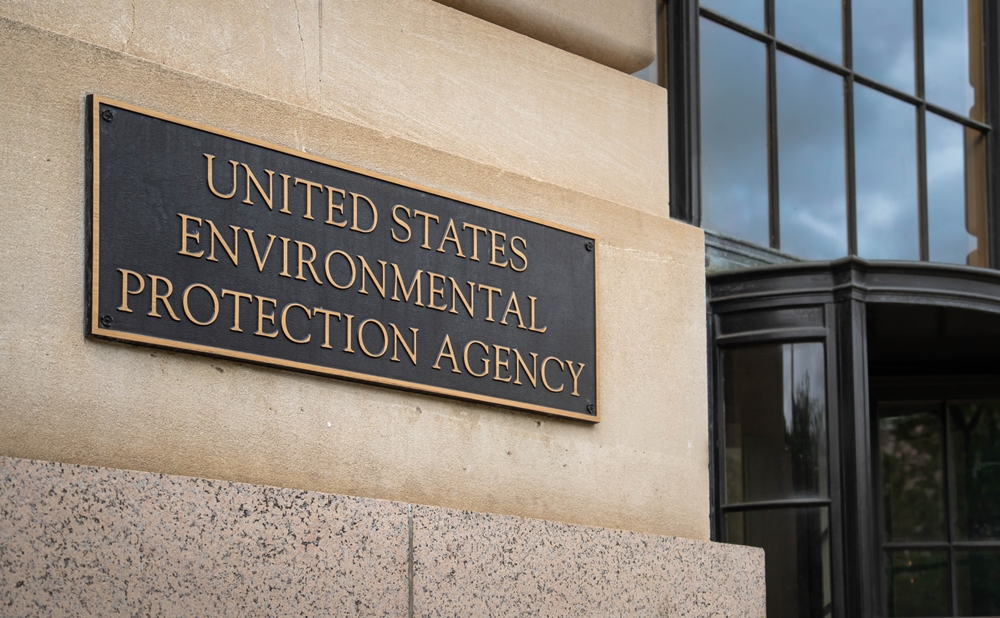
Michael Reynolds took the idea of sustainable architecture to a whole new level, but he is not the only person in his field to push for creating more sustainable buildings and homes. In 1989, architect Bill Berkebile, along with other up-and-coming architects from around the country successfully petitioned the American Institute of Architects (AIA) to pass the resolution “CPR: Critical Planet Rescue,”. They created the Committee on the Environment, or COTE, which collaborated with the United States Environmental Protection Agency to produce new guidelines for environmentally-friendly architectural design.
The committee’s goal was to take the Earthship idea and make it more commercially viable. When President Bill Clinton decided he wanted to make changes at the White House to be more sustainable, he called upon COTE to oversee the project. Eventually, the U.S. Green Building Council (USGBC) was created to accommodate the interests of a now-growing sustainable architecture industry, in order for COTE to be able to focus solely on the science of sustainable architecture [2].
LEED Standards
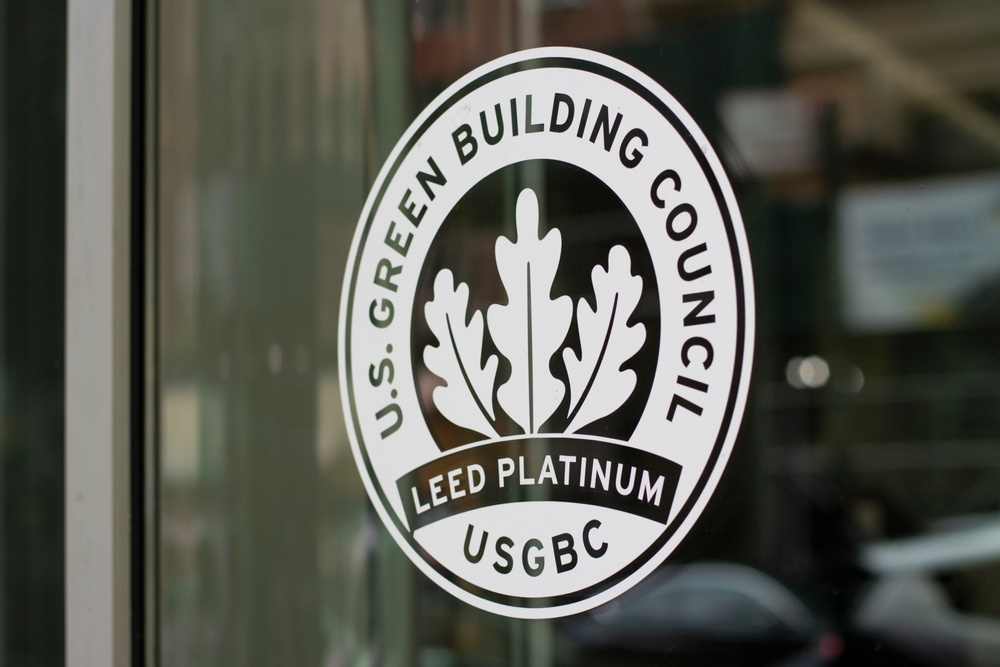
LEED stands for Leadership in Energy and Environmental Design. Established in 1998, it is a rating system for environmentally sound buildings and can be applied to homes and commercial buildings. The goal of the organization is to ensure that the next generation of buildings is more sustainable than the last. Their website states:
“Our vision is that buildings and communities will regenerate and sustain the health and vitality of all life within a generation. Our mission is to transform the way buildings and communities are designed, built, and operated, enabling an environmentally and socially responsible, healthy, and prosperous environment that improves the quality of life.” [3]
EVE
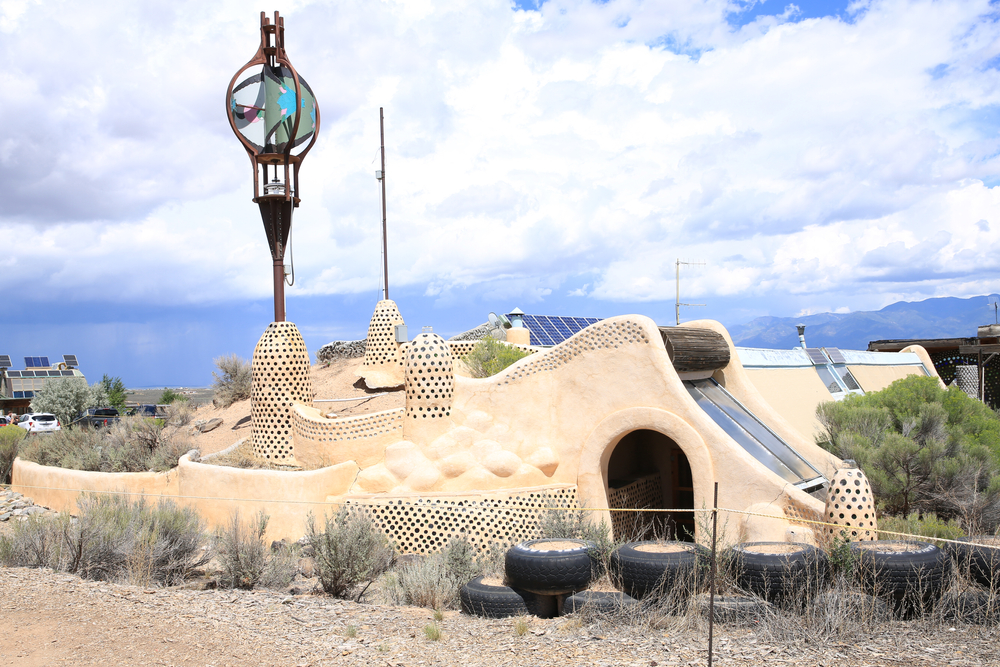
EVE is the largest structure in the Greater World Earthship Community and stands for Earthship Village Ecologies. It contains five studio apartments with a shared living space. EVE is the result of the Sustainable Development Testing Site Act, which was written by Reynolds and passed by the New Mexico Legislature in 2007 to allow he and his colleagues to research and test sustainable housing on two acres of land. Unfortunately, EVE was never fully finished, because the permit had one condition: that it would expire after five years, and at that point, they must stop building. Today, it is used to grow plants and vegetables year-round [1].
Read: 10 Perfect Places In North America To Live Off The Grid
Who Are the People Who Live There?
Baisley describes the people who live in the community as “volunteer anarchists”. “Not the kind throwing Molotov cocktails,” he explains. “The people here are really friendly, they just don’t want to be forced to participate in systems that they see as corrupt or amoral.” Many of the homes were built to be used as educational opportunities for the interns living on the premises. For that reason, building tends to be slower, taking up to two years to complete. They can, however, be built in as little as two months if someone has the money to fund building at that speed [1].
What if I Want to Live in an Earthship?
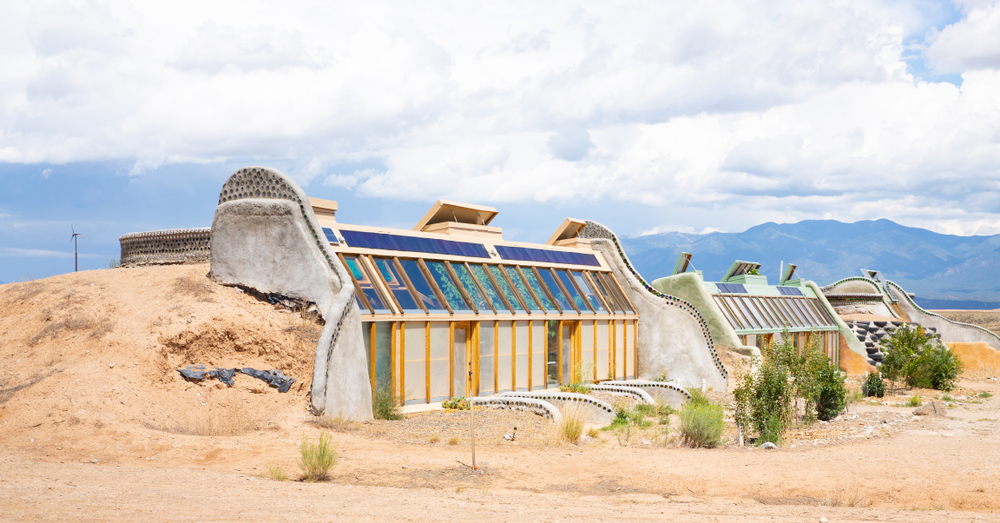
You can build your own, or have one built for you for a range of prices depending on what you’re looking for. A small “survival dome” can be built for as little as two thousand dollars, or you can have a very spacious, luxurious home for five hundred thousand dollars. Alternatively, if you just want to try it to see what these Earthships are all about, you can rent one of the community’s existing homes on a nightly basis.
Bottom Line
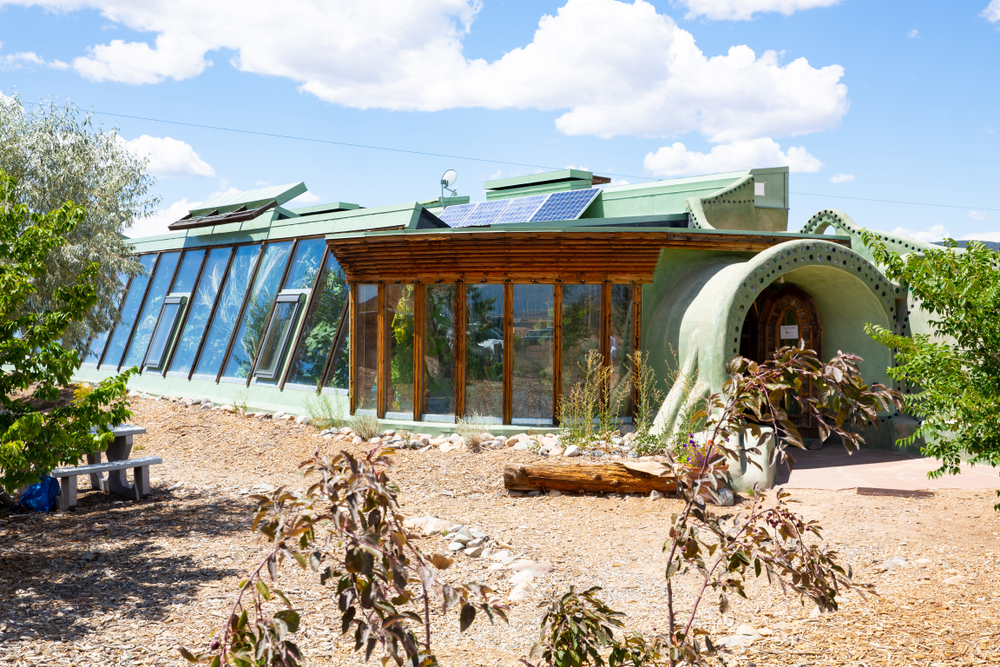
Earthships are now popping up all over the world and can be found in South Africa, Australia, Argentina, Guatemala, and several countries across Europe. They are seen as a way to combat global warming and reduce our reliance on fossil fuels. According to Reynolds, humanity is akin to the Titanic- we have already hit the iceberg, and Earthships are our lifeboats [1].
Keep Reading:
Living Off-Grid for Almost 80 Years
